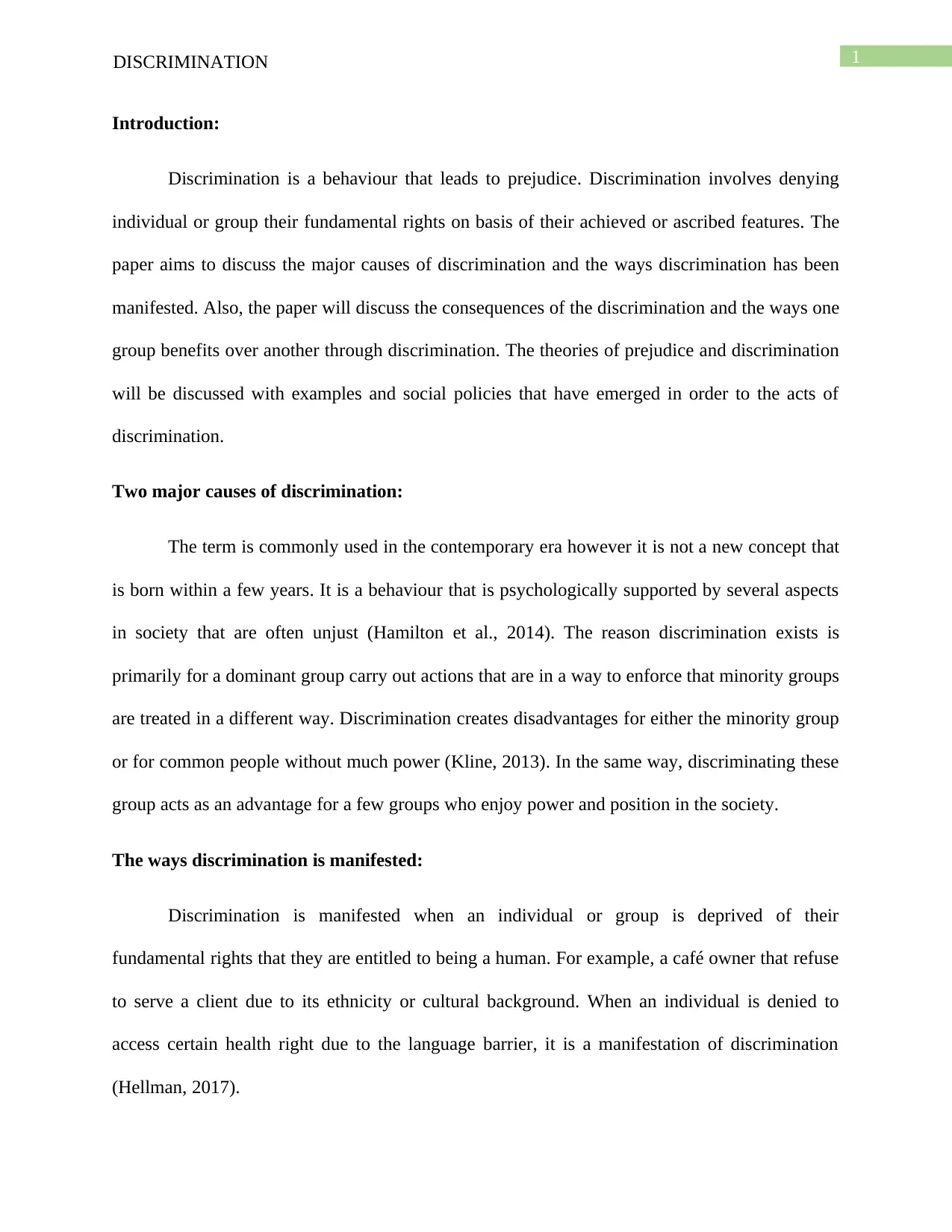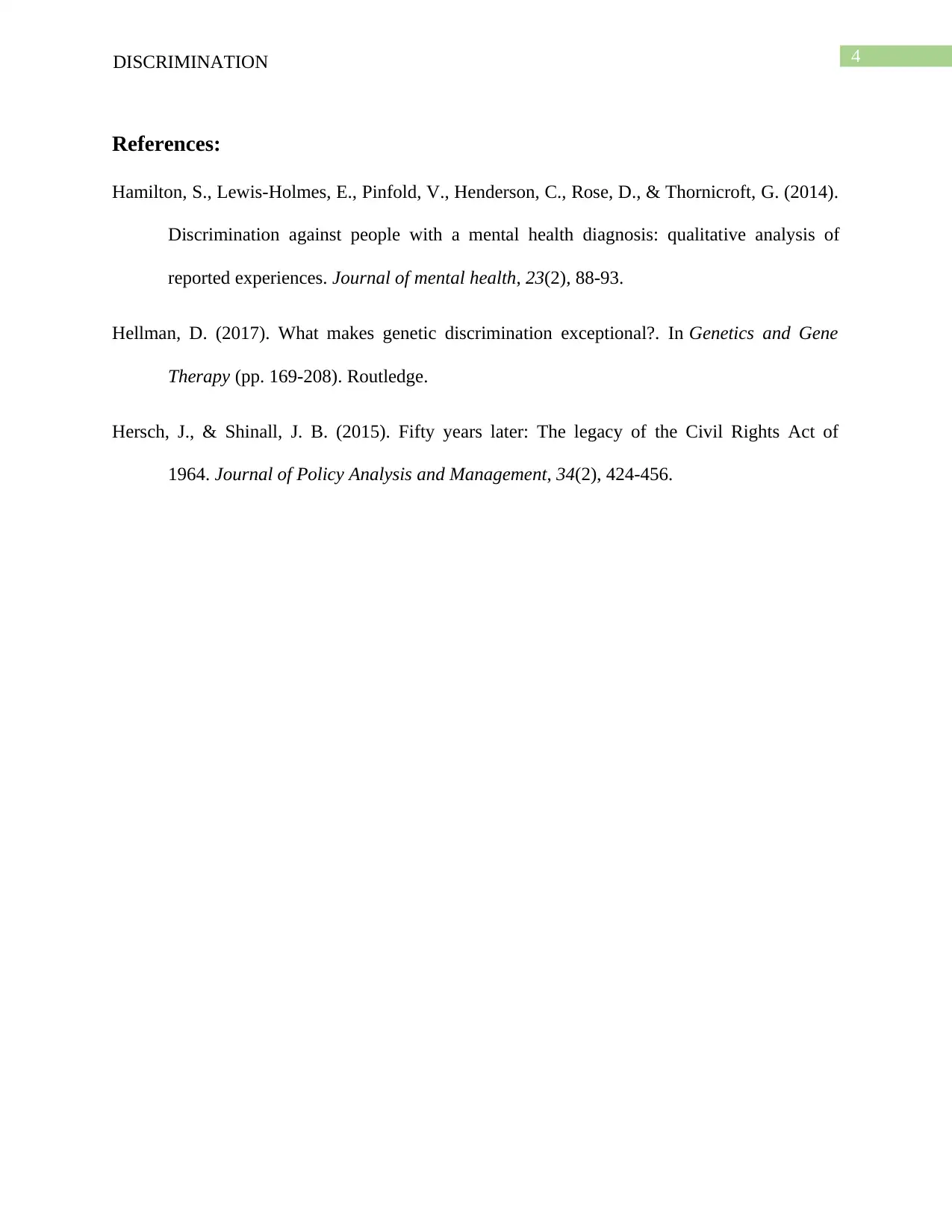Discrimination: Causes, Consequences, Theories, and Policies Analysis
VerifiedAdded on 2023/04/23
|5
|745
|450
Essay
AI Summary
This essay delves into the multifaceted issue of discrimination, analyzing its root causes, diverse manifestations, and far-reaching consequences. It examines how discrimination benefits certain groups while disadvantaging others, providing a comprehensive understanding of its societal impact. The essay applies sociological theories of prejudice and discrimination, offering psychological insights into discriminatory behaviors. Furthermore, it explores social policies designed to address discrimination, such as the Civil Rights Act of 1964, and evaluates their effectiveness. The analysis is supported by references to course readings, adhering to proper APA formatting, making it a valuable resource for students studying sociology and related fields. This assignment offers a thorough examination of discrimination, its theoretical underpinnings, and practical implications.
1 out of 5










![[object Object]](/_next/static/media/star-bottom.7253800d.svg)